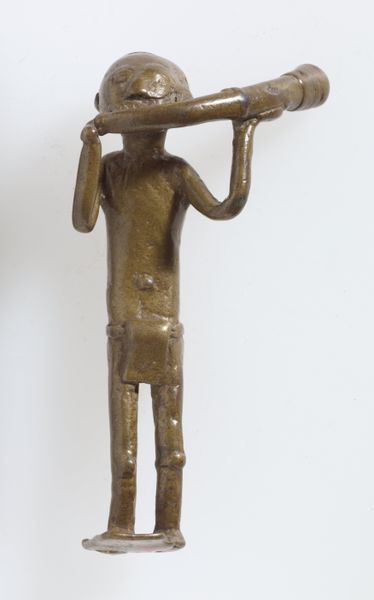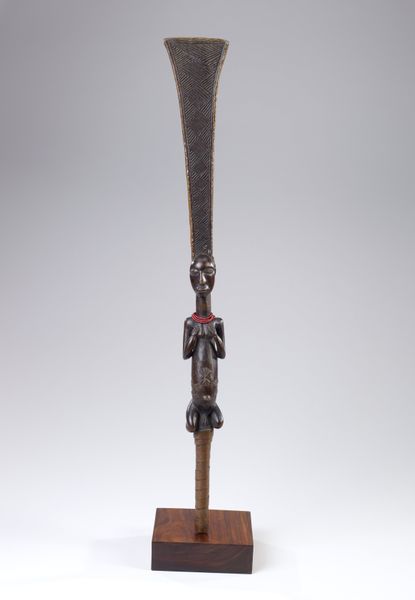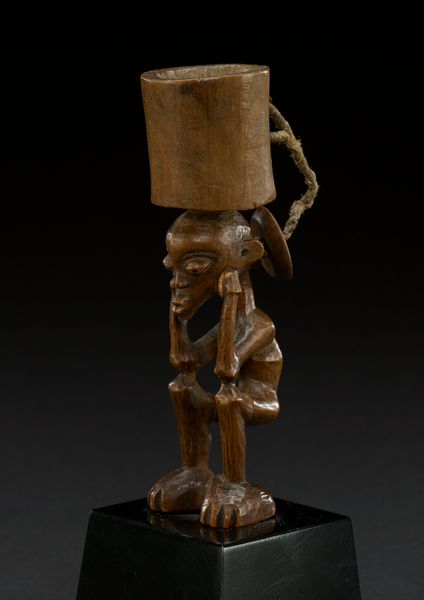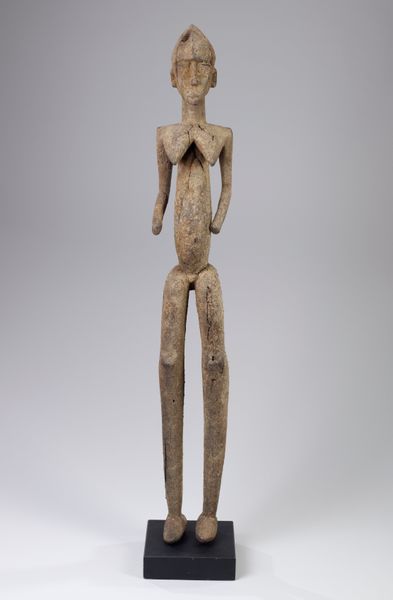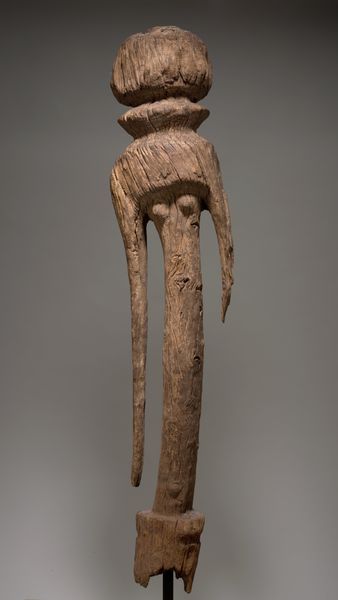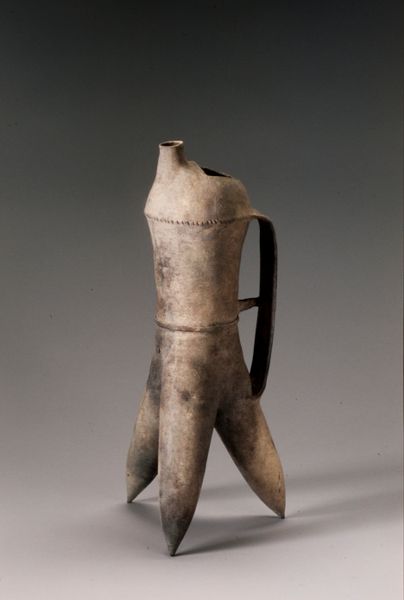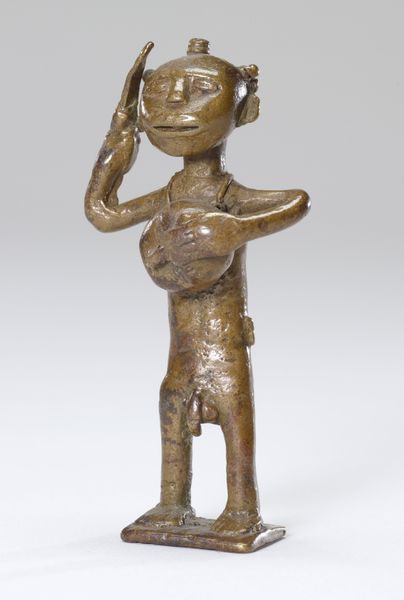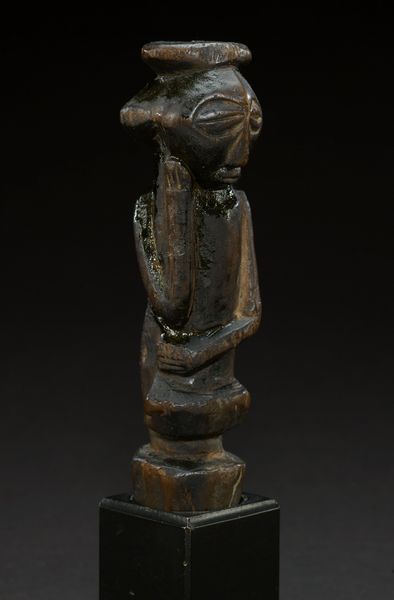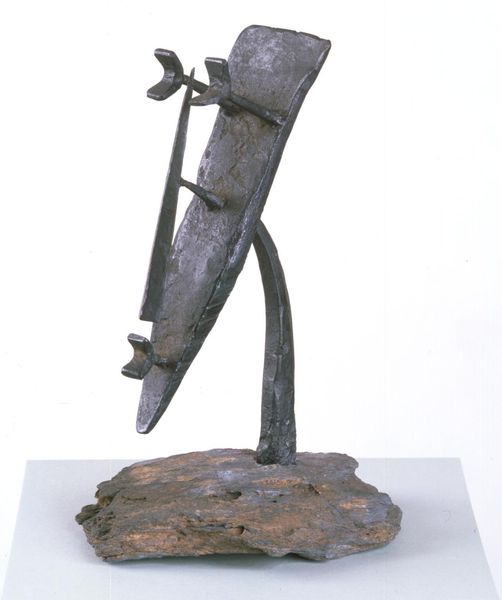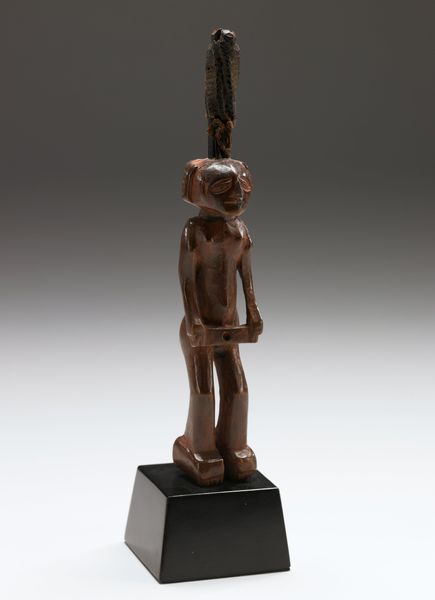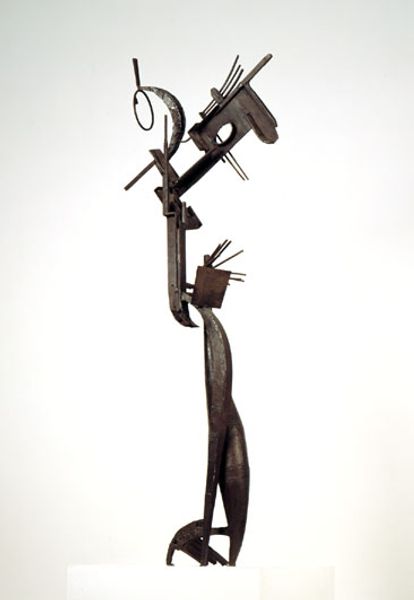
sculpture, wood
#
african-art
#
sculpture
#
figuration
#
sculpture
#
wood
Dimensions: 37 1/2 x 7 1/2 x 14 1/4 in. (95.3 x 19.1 x 36.2 cm)
Copyright: Public Domain
Curator: I’m struck immediately by the way this Dogon “Hornbill Mask” from the early 20th century combines human and animal forms. There's something inherently powerful in that visual language. Editor: Powerful, yes, but also deeply unsettling. Look at how roughly the wood is worked. The mask section has a raw, almost violent, texture to it, in contrast to the smoother figure above. Curator: The synthesis is key here. The figure is poised precariously above this horned base. Hornbills are powerful symbols of fertility and the transmission of ancestral knowledge within Dogon culture, and these masks are not static objects, they come alive in performance. Editor: Absolutely. I can imagine the weight of this object on the dancer; can you imagine how it impacts their movement? The type of wood would drastically influence how it's danced; lighter woods versus a hardwood makes it seem unwieldy. You wonder about the community of craftspeople involved, too; each stage requiring different levels of skill, each mark embedding a different gesture. Curator: Precisely. And beyond the physicality, the hornbill symbolizes the first ancestor who died and was resurrected as a bird. The mask represents the connection to the spiritual realm. Its wearing transforms the dancer into an intermediary, ensuring the community's well-being through performance. It embodies the spirit during ritual ceremonies. The figure on top also presents a figure of feminine power, maybe alluding to Yasinge, who introduced masks and dancing to the Dogon. Editor: It does change how you consider this piece if the intent is to embody this spirit of transformation. This isn't a static, polished sculpture meant for passive viewing; this is a ritual object worn and danced in performance and imbued with labor from each creator. What an immense collision of meaning! Curator: That friction, the meeting point of the crafted object and the danced, embodies so much rich ancestral wisdom and social commentary. Editor: Yes, truly. I'm walking away with a whole new appreciation for both its function and form, now.
Comments
minneapolisinstituteofart almost 2 years ago
⋮
Very long ago, according to Dogon mythology, a woman stumbled across a group of masked supernatural beings. Startled, they fled and left behind their masks and costumes, which the woman brought to her village. The men grew jealous, stole the masks from her, and made masking an exclusively male prerogative. The woman, called Yasigine (“sister of the masks”), is remembered by this type of mask—that’s her on top—representing the hornbill, whose picking of grains and stirring of dust is mimicked by the dancer during his performance.
Join the conversation
Join millions of artists and users on Artera today and experience the ultimate creative platform.

